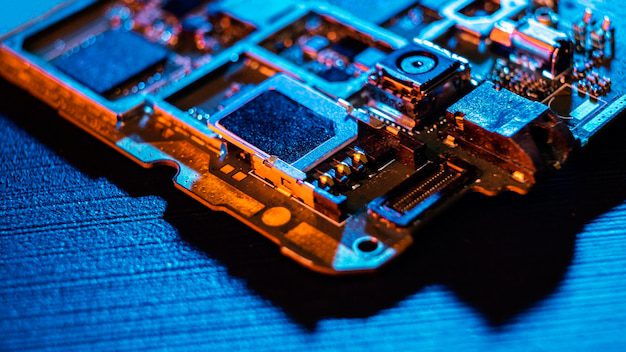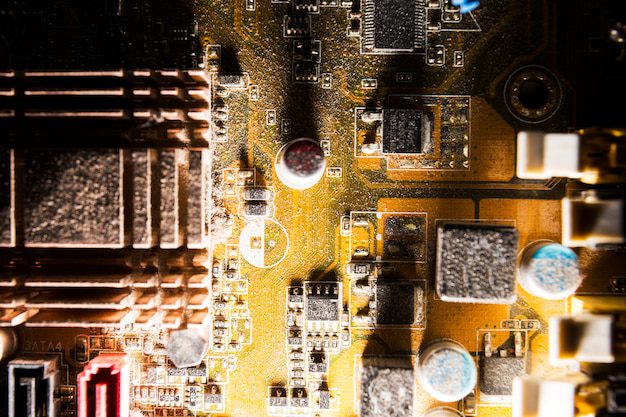How much e-waste was produced in 2021
E-waste, or electronic waste, is becoming a growing concern worldwide as technology continues to advance at a rapid pace. With the constant release of new gadgets and devices, it is important to understand the impact that e-waste has on our environment. In 2021, the amount of e-waste generated globally reached an astounding figure.
E-waste refers to any electronic device that is discarded and no longer in use. This includes items such as smartphones, laptops, tablets, televisions, and other household appliances. The United Kingdom plays a significant role in global e-waste production, being one of the top consumers of electronic devices.
The Global Picture
In 2021, it is estimated that approximately 53.6 million metric tonnes of e-waste were generated worldwide. This is an increase of around 20% compared to the previous five years. This staggering amount of e-waste highlights the urgent need to address this issue and implement effective recycling and disposal strategies.
According to the United Nations’ Global E-waste Monitor 2020 report, Asia accounted for the highest amount of e-waste generated, followed by the Americas, Europe, Africa, and Oceania. However, it is important to note that these figures are based on estimates and may not be entirely accurate due to variations in reporting and data collection methods across different regions.
E-Waste in the United Kingdom
In the United Kingdom, e-waste is a significant concern. With a population of over 66 million people, the country’s consumption and discard rate of electronic devices contribute to the global e-waste problem. According to a report by the World Economic Forum, the UK generates approximately 1.45 million metric tonnes of e-waste annually.
It is essential to manage and dispose of e-waste properly to prevent environmental pollution and protect human health. Electronic devices contain hazardous substances such as lead, mercury, cadmium, and brominated flame retardants, which can be harmful if not handled correctly.
The Importance of Proper E-Waste Management
Proper e-waste management is crucial for several reasons:
- Environmental Impact: E-waste contains toxic substances that can leach into the soil and water, posing a threat to ecosystems. By recycling and disposing of e-waste correctly, we can reduce the environmental impact and prevent contamination.
- Resource Conservation: Electronics contain valuable materials such as gold, silver, copper, and rare earth metals. Recycling e-waste allows us to recover these resources and reduce the need for new mining, thus conserving natural resources.
- Health Risks: Improper disposal of e-waste can expose individuals to harmful substances. These toxins can enter the body through inhalation, ingestion, or direct contact, leading to serious health issues. Safe handling and recycling of e-waste help mitigate these risks.
- Reducing Energy Consumption: Manufacturing electronic devices consumes a significant amount of energy and contributes to greenhouse gas emissions. By extending the lifespan of electronics through proper recycling and refurbishment, we can reduce the energy demand associated with producing new devices.
Addressing the E-Waste Issue
The management of e-waste requires a multi-faceted approach involving various stakeholders, including governments, manufacturers, consumers, and the recycling industry. Some measures that can be taken to address the e-waste issue include:
- Legislation and Regulation: Governments can implement strict regulations and legislation that require proper disposal and recycling of e-waste. They can also incentivize manufacturers to design products that are easier to recycle and repair.
- Educating Consumers: Raising awareness among consumers about the importance of responsible e-waste disposal can encourage them to recycle their old devices instead of discarding them inappropriately.
- E-Waste Recycling Infrastructure: Developing and improving e-waste recycling infrastructure is necessary to facilitate the proper collection, processing, and recycling of electronic waste. This includes establishing more collection points and ensuring that they are easily accessible to the public.
- Extended Producer Responsibility (EPR): Implementing EPR schemes can hold manufacturers accountable for the life cycle of their products, including their proper disposal and recycling. This can incentivize manufacturers to design more sustainable and recyclable products.
“E-waste is a growing problem that requires collaborative efforts from various sectors to find sustainable solutions. By implementing effective e-waste management strategies, we can minimize the environmental impact and maximize resource recovery.” – Expert on E-Waste Management
The Way Forward
As technology continues to evolve, the production and disposal of electronic devices will continue to increase. It is crucial for individuals, businesses, and governments to work together to tackle the e-waste problem effectively.
Through proper awareness, responsible consumption, and improved recycling practices, we can reduce the amount of e-waste generated and ensure that precious resources are conserved. Implementing robust recycling infrastructure, promoting circular economy principles, and enforcing strict regulations are essential steps towards a more sustainable future.
By taking action today, we can contribute to the reduction of e-waste and safeguard our environment for future generations.



